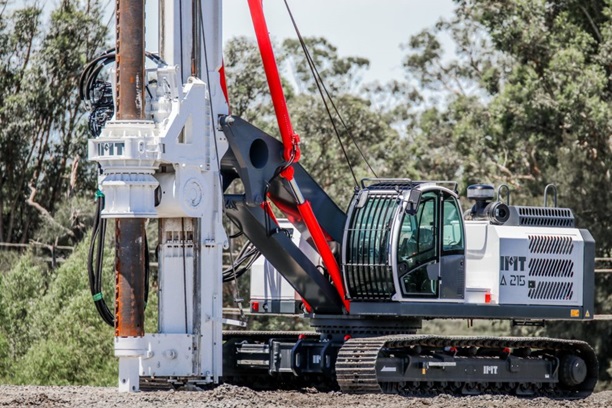How To Determine How Deep To Drill a Well
Are you planning to have a well drilled on your property? Do you want to know how to determine how deep to drill a well? Read on to learn more.
Did you know that more than 23 million families depend on private wells for water in the United States?
Many people residing in Michigan rely on groundwater as their primary water supply. In some places in Michigan, the bedrock is relatively close to the surface. Here wells are drilled into the bedrock, where water is held in aquifers.
In other areas in Michigan, there are varying thicknesses of soil over the bedrock. As a result, wells drilled into these areas are deeper.
But how do you know how to determine how deep to drill a well? The final depth of a new well varies based on the geology of your area and how much water is underground. Drilling companies use experience, knowledge, and guesswork to determine how deep the final well will be.
Are you thinking of drilling a well on your property? Then continue reading to find out more about well drilling depth.
How to Determine How Deep to Drill a Well
There is no one answer to how deep you must dig to make a new well. It’s much like the question, ‘How long is a piece of string?’ Water wells can be anywhere from 100 to 800 feet deep, with 300 feet being the average.
This depends on several different things:
Local Building Codes and Regulations
Building codes and regulations in your area are the most important thing to consider when drilling wells.
There are a few things to think about here. First, the basic rule for water wells is that the well-casing must reach bedrock and be at least 25 feet long. You’ll also need to think about:
- Well grouting
- Well sealing
- Well-cap reinforcement
All of these vary from state to state and even city to city. You can always check with your local municipal public offices if you aren’t sure about these codes. However, a professional well-drilling company will have experts who can usually point you in the right direction.
Water Quality Considerations
As a general rule, the deeper you go, the better the water quality. This is because organisms in the soil can get into water that is closer to the surface. Aside from that, chemical pollutants can also get into the water at the top and contaminate it.
Because of this, most local governments have rules about how deep wells must be at a minimum.
In general, it’s recommended to keep a well’s depth at least a few feet deeper than what the local authority says is the minimum depth.
To avoid risks, many states have rules that say drilling must go to a certain minimum depth.
Rocky Formations
The water level beneath the ground is also affected by how rocky the land is. Water can penetrate many thousand feet deep if the subterranean landscape is composed of highly rocky layers.
The pipe’s wall thickness should correspond with the depth. This means that a bigger storage capacity calls for a thicker pipe.
Your water well’s depth will depend on these geological features. Therefore your contractor should be familiar with them.
Changes in the Water Table
The “water table” is where the ground becomes completely saturated with water. It’s something that fluctuates throughout the course of a year. This is because of various factors, the most significant of which are seasonal rainfall shifts.
Most of the time, your contractors will take time to figure out how high the water table is before they start drilling. They will try to find the lowest water table threshold of the year by looking at statistics from the past several years.
The depth of the water table can vary greatly from one region of Michigan to another, even if the regions are relatively close to one another.
Longevity of a Well or Draw Rate and Silting
The lifespan of deeper wells is typically longer. Why? In addition to the fact that they have low draw rates, the bottoms of these wells also record a low amount of silt.
Well Silting
Some poorly-installed wells experience “silting up,” where grit or sand gets into the pump and becomes part of the pumped water. Of course, some wells are drilled deep to avoid silting, leaving years before concerns develop.
Shallow wells silt quickly. Since silt removal is costly, shallow well maintenance costs rise. In addition, finding silt-cleaning services is similarly difficult.
Well Draw Rate
In addition to depth considerations, your well drilling professionals will consider draw rate. This is the rate at which the pump pulls up water from the well. Of course, you want the draw rate fast enough to deliver enough water, but not so quickly that silt or other material gets in.
Avoiding Water Surface Contamination
Finally, as previously discussed, the deeper the well, the less likely bacterial and soil organisms will contaminate the water.
However, in the case of particularly deep wells, the water must travel through rocks and dirt to reach the surface, increasing the likelihood of particles entering the water stream.
Similarly, the risk of minerals making their way into the water supply rises significantly when deep wells are involved. Because water that is high in minerals needs to be treated to make it more suitable for human consumption, the costs of maintaining deep wells are typically higher.
As a result, wells should be neither too deep nor too shallow. The depth should be adequate so that it does not affect water quality.
How Far Do You Need to Drill Down to Hit Water?
So, we hope we have clarified the answer to the question, ‘How to determine how deep to drill a well to produce quality and quantity of water?’
In short, well drilling requires experienced people since the answer is “it depends.” An experienced contractor can make decisions based on experience. More experience means more accuracy.
Are you looking for an experienced well-drilling company in Howell, Michigan? Then, contact us today! We have over 40 years of expertise and can offer top advice for your individual needs. We will assess the best well, pump, and placement to meet your specific needs.




